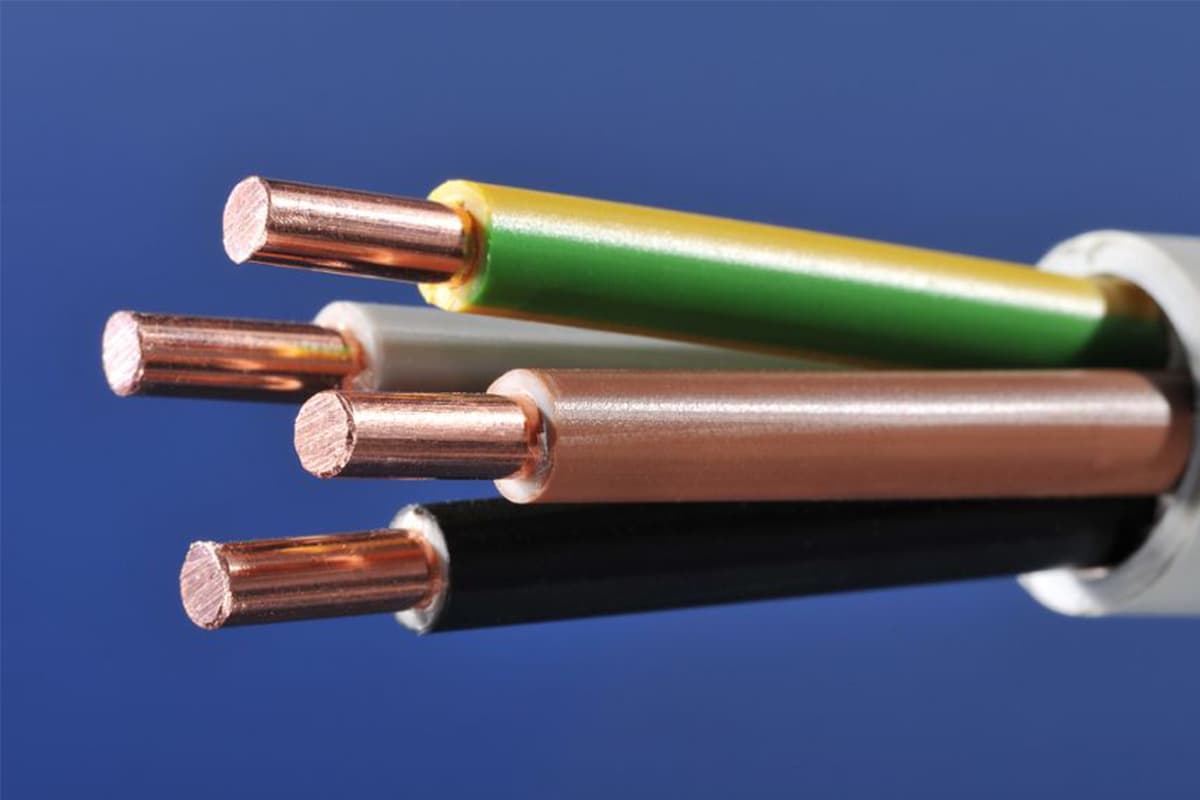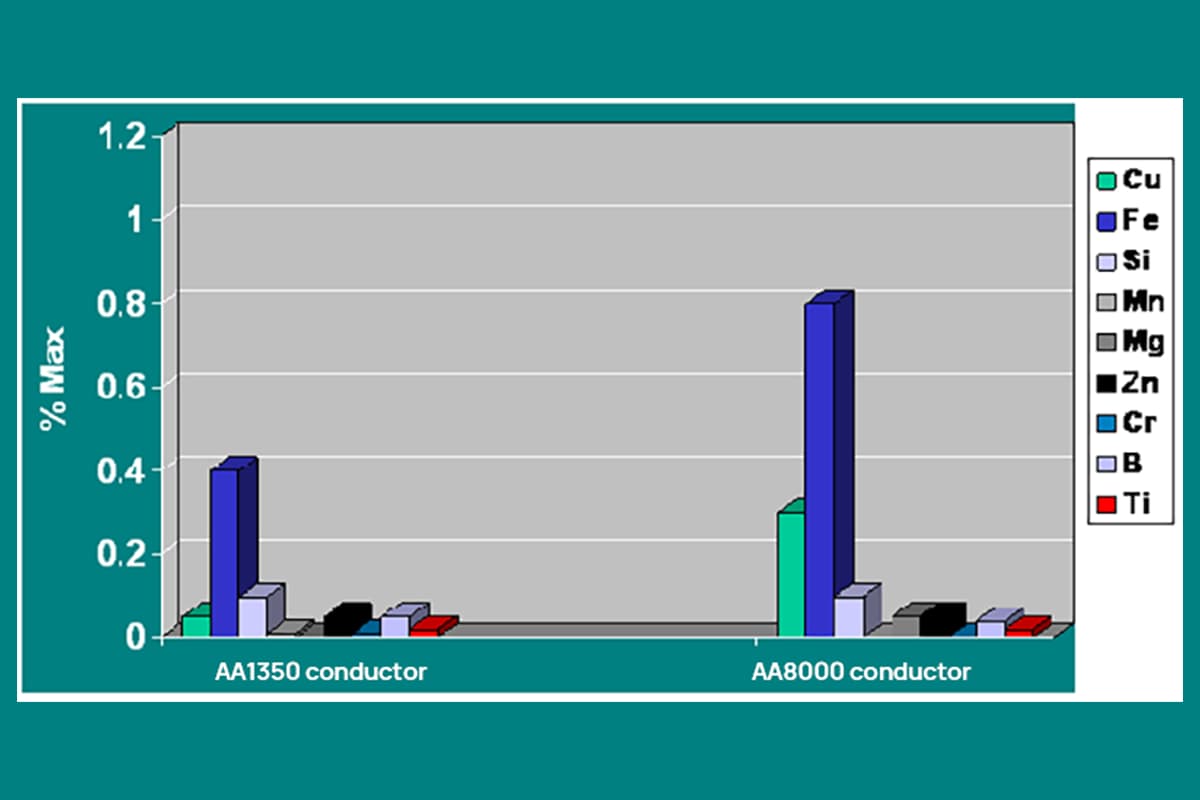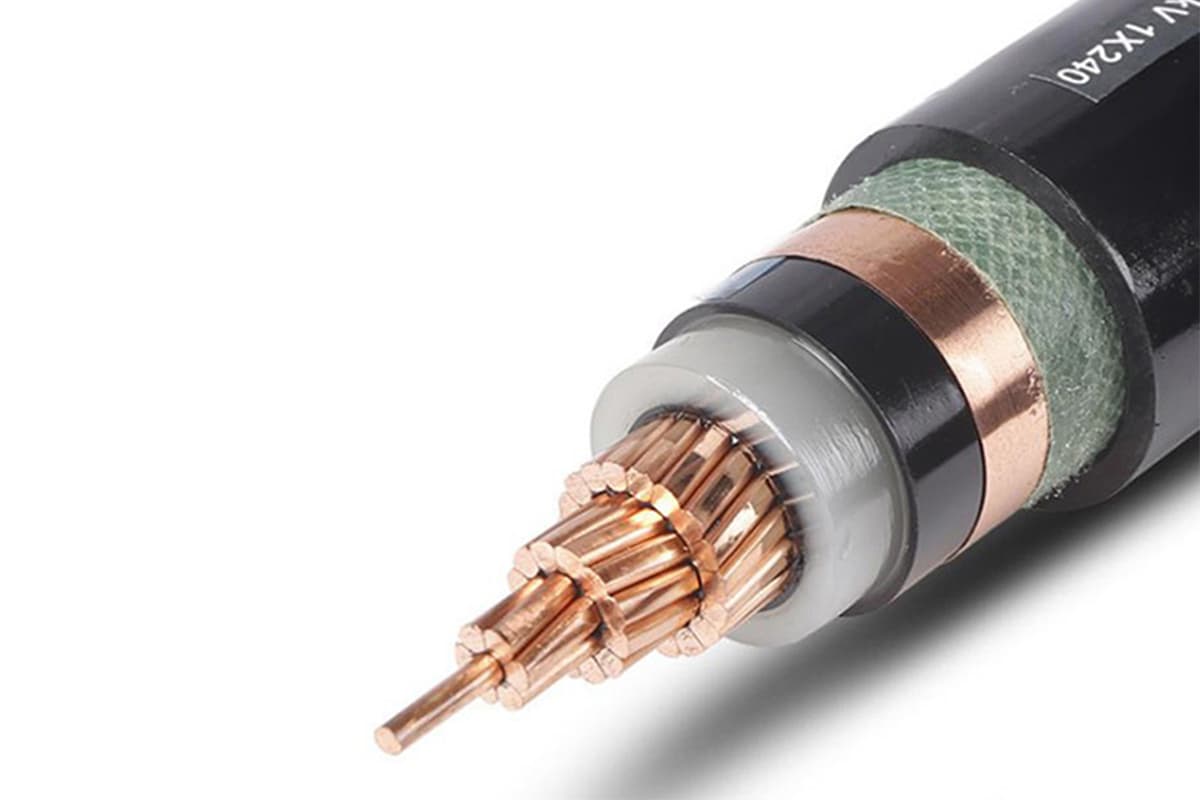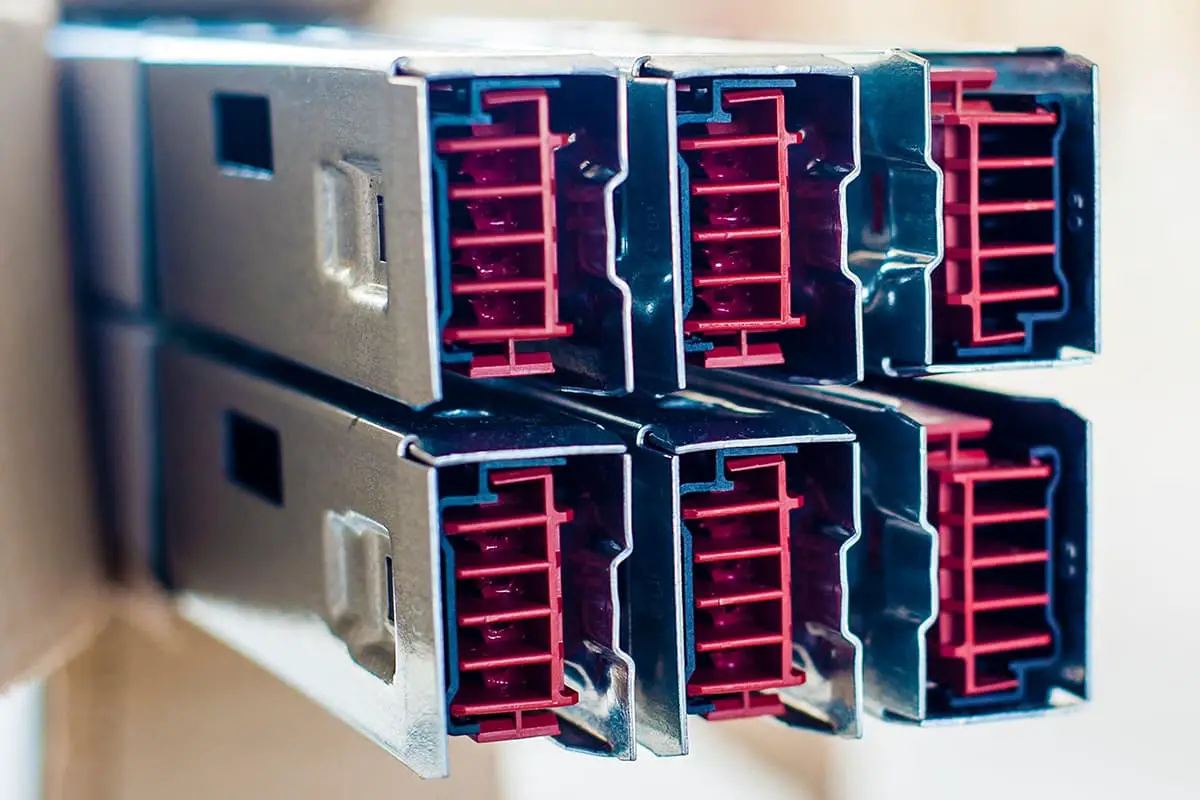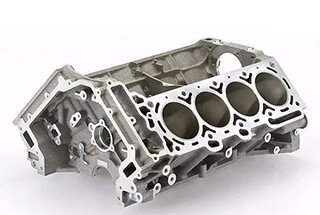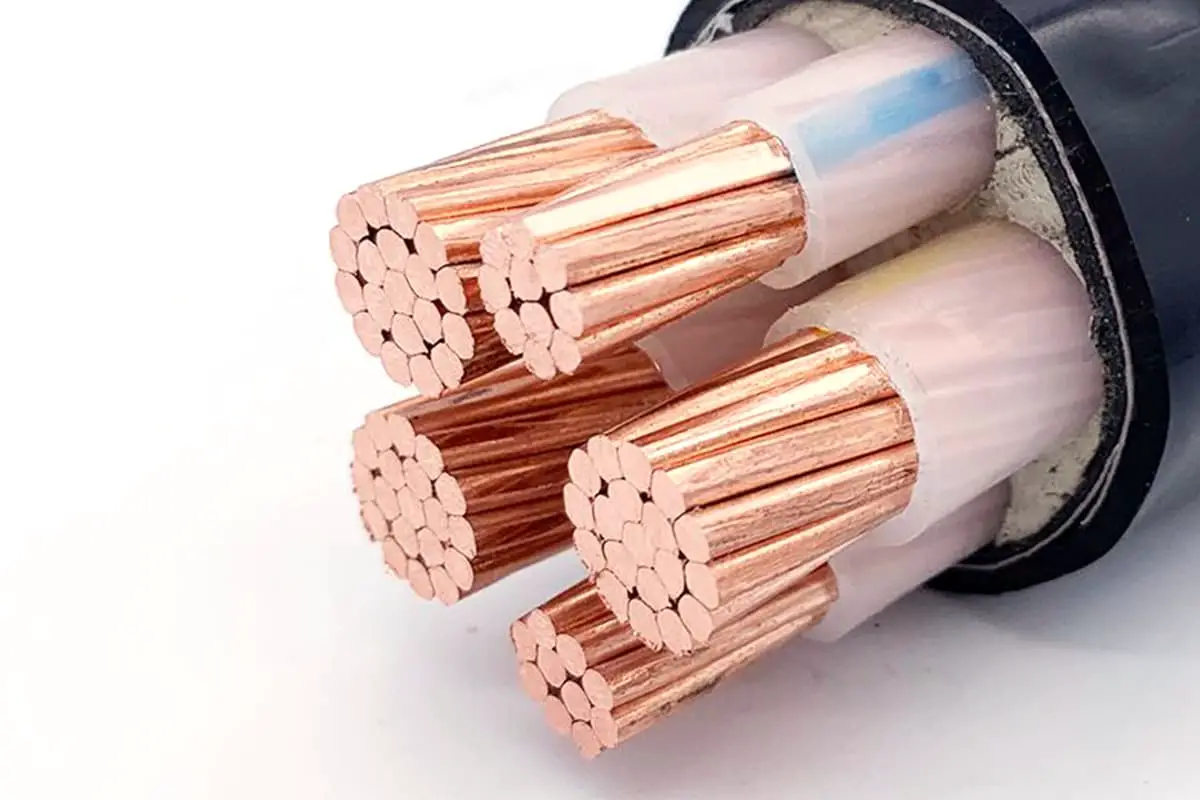
Are you struggling to decide between copper and aluminum core cables? Understanding the key differences can help you make an informed choice. Copper cables offer lower resistivity, higher strength, and better stability, making them ideal for underground power supply. Aluminum cables, on the other hand, are lighter and cheaper, suitable for high voltage and long-span applications. This article breaks down their advantages and disadvantages, ensuring you pick the right cable for your needs. Dive in to learn how to optimize your electrical systems effectively!
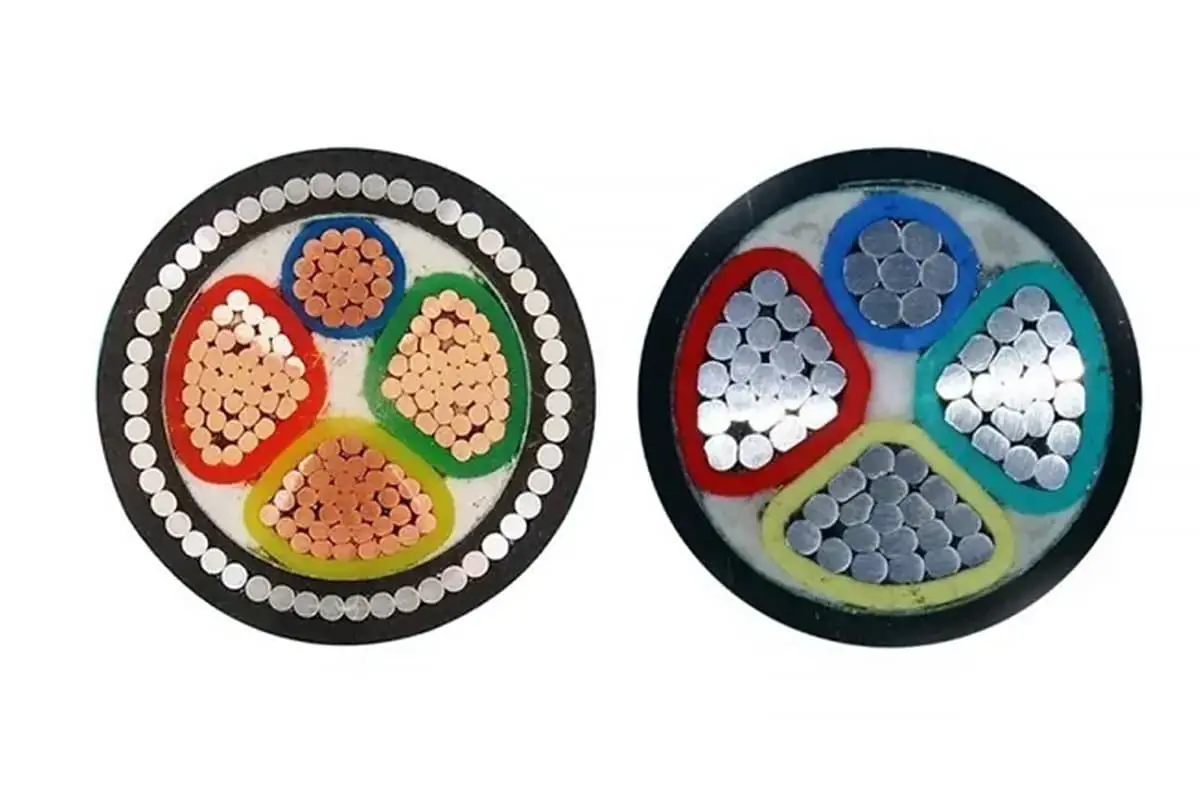
(1) Low resistivity: The resistivity of aluminum core cables is about 1.68 times higher than that of copper core cables.
(2) Good ductility: Copper alloys have a ductility of 20-40%, while electrical copper is over 30%, but aluminum alloy only has 18%.
(3) High strength: Under normal temperatures, the permissible stress of copper is 7-28% higher than that of aluminum. This difference is particularly significant at high temperatures.

(4) Fatigue resistant: Aluminum tends to fracture after repeated bending, while copper does not. In terms of elasticity index, copper is about 1.7-1.8 times higher than aluminum.
(5) Good stability and corrosion resistance: Copper cores are resistant to oxidation and corrosion, whereas aluminum cores are prone to oxidation and corrosion.
(6) Large current-carrying capacity: Due to low resistivity, the current-carrying capacity (maximum current it can carry) of copper core cables of the same cross-section is about 30% higher than that of aluminum core cables.
(7) Low heat generation: Under the same current, the heat generated by copper core cables of the same cross-section is significantly less than that of aluminum core cables, making operation safer.
(8) Low energy consumption: Due to copper’s low resistivity, power loss in copper cables is lower than in aluminum cables. This is obvious and beneficial for improving power generation utilization and protecting the environment.
(9) Oxidation resistant, corrosion resistant: Copper core cable connections are stable and won’t cause accidents due to oxidation. Aluminum core cable connections are unstable, and the increased contact resistance from oxidation can often lead to heating and accidents. Therefore, the accident rate is much higher than copper core cables.
(10) Convenient for construction: Copper cores are flexible with a small allowable bending radius, making bending and threading easier; copper cores are fatigue resistant, not easily broken after repeated bending, making wiring easy; the mechanical strength of copper cores is high, able to withstand larger mechanical tension, which greatly facilitates construction and laying and creates conditions for mechanized construction.
(11) Small voltage loss: Due to the low resistivity of copper core cables, when the same current flows through the same cross-section, the voltage drop of copper core cables is small. The same transmission distance can ensure higher voltage quality; under permissible voltage drop, copper core cables can reach a far distance, that is, the power supply coverage area is large, which is conducive to network planning and reducing the number of power supply points.
In conclusion, copper core cables have the advantages of low resistivity, good ductility, high strength, fatigue resistance, good stability, and large current-carrying capacity. They have outstanding advantages in the field of cable power supply, especially underground cable power supply.
Aluminum core cables are cheaper than copper core cables, lighter, and easy to transport, making them essential materials for high voltage, large cross-section, long span overhead transmission.
Therefore, I want to remind you to choose the appropriate cable product according to different applications and the characteristics of products made from different materials.
We often use copper core cables and aluminum core cables, but many users do not know whether to choose copper core cables or aluminum core cables.
To make a clear judgment between the two, I will introduce the advantages of copper core cables over aluminum core cables.
(1) Strong conductivity: The resistivity of aluminum core cables is about 1.68 times higher than that of copper core cables. Due to the lower resistivity of copper core cables, the same cross-section copper core cables have a larger current-carrying capacity than aluminum core cables, so the conductivity of copper core cables is generally higher than that of aluminum core cables.
(2) Good ductility: Metals have good ductility, such as gold, platinum, copper, silver, tungsten, and aluminum, which are rich in ductility. Among them, the ductility of copper alloys is 20-40%, and the ductility of electrical copper is more than 30%.
(3) Good elasticity: Copper cables are not easily broken when bent repeatedly by hand, and have strong fatigue resistance, while aluminum is very prone to breakage. In terms of elasticity index, copper is about 1.7-1.8 times higher than aluminum.
(4) Good anti-oxidation: The cable joint of the aluminum core is unstable and will react with air oxidation, causing an increase in cable conductor resistance, causing conductor heating and accidents. However, the cable joint of the copper core is more stable and will not cause accidents due to oxidation. Therefore, the stability of copper core cables is far higher than that of aluminum core cables.
(5) Low Voltage Loss: Due to the lower resistivity of copper core cables, when the same current flows through the same cross-section, the voltage drop of copper core cables is smaller. In the same transmission distance, copper core cables can ensure a higher voltage quality.
Under allowable voltage drop conditions, copper core cable transmission can reach a further distance, meaning a larger power supply coverage area, which benefits network planning and reduces the number of power supply points. The resistivity of aluminum core cables is higher, and their performance is far inferior to that of copper core cables.
(6)Easy Construction: Because the elasticity of copper core cables is much higher than that of aluminum core cables, they are not easily broken with repeated bending, and their flexibility is better, with a smaller allowable bending radius.
Therefore, it is easier to bend during the laying process and more convenient for threading. Furthermore, the mechanical strength of copper core cables is high and can withstand more external force damage, providing greater convenience during construction.
From the above, copper core cables have the advantages of low resistivity, good ductility, high elasticity, good anti-oxidation, and large current carrying capacity. They have outstanding advantages in cable power supply.
Many people often cannot distinguish the advantages of aluminum core cables and copper core cables, or where they are applied. Therefore, I have compiled the differences, advantages, and disadvantages of the two.
1) The basic differences between aluminum wire and copper wire:
1. The current carrying capacity of copper wire and aluminum wire is different.
2. Aluminum wire is relatively cheaper.
3. Aluminum wire is lighter in weight.
4. Aluminum wire has poorer mechanical strength.
5. Aluminum wire is prone to oxidation at the connection point, and after the connection point is oxidized, a temperature rise will occur.
6. Copper wire has lower internal resistance. Although aluminum wire has higher internal resistance than copper wire, it dissipates heat faster. The main differences are the different current-carrying capacities and mechanical strength.
The resistivity of copper is 0.017, and aluminum is 0.029. Therefore, the current-carrying capacity of aluminum is about 80% of copper. The mechanical strength of copper is also much better.
2) Comparison of the advantages and disadvantages of copper core cables and aluminum cables:
1. Copper core cable has lower resistivity: the resistivity of aluminum core cables is about 1.68 times higher than that of copper core cables.
2. Copper core cable has good ductility.
3. Copper core cable has high strength: The allowable stress at room temperature can reach 20 for copper, while aluminum is 15.6kgt/mm2.
4. Copper core cable is fatigue resistant: aluminum material is prone to breakage with repeated bending, while copper is not.
5. Copper core cable is stable and corrosion-resistant: Copper cores are resistant to oxidation and corrosion, while aluminum cores are prone to oxidation and corrosion.
In earlier times, pure aluminum cables were gradually phased out in favor of copper cables due to high resistivity, heating at the joints due to oxidation, poor fatigue resistance, electrochemical corrosion, and creep.
However, with the enhancement of aluminum alloy material properties, aluminum alloy cables produced with AA-8000 series aluminum alloy conductors, using advanced technologies such as special crimping processes and annealing treatments, have emerged.
This type of aluminum alloy power cable compensates for the deficiencies of previous pure aluminum cables, solves the problems of electrochemical corrosion and creep of pure aluminum conductors, and improves the bending performance, fatigue resistance, creep resistance, and corrosion resistance of aluminum alloy cables.
This ensures that the cable maintains steady performance during long periods of overload and overheating. As a result, there are an increasing number of manufacturers and the cables are being utilized in related fields.
The differences in physical properties between aluminum alloys and copper are shown in Table 1.
| Copper Cable | Aluminum Alloy Cable | Comparative Statement | |
| Density (g/mm3) | 8.89 | 2.7 | The weight of an aluminum alloy cable of the same diameter is one-third that of a copper cable. |
| Electrical Conductivity % IACS (68°F) | 100 | 61.8 | The conductivity of an aluminum alloy cable of the same diameter is 61.8% that of a copper cable, while its current-carrying capacity is 79% of copper’s. |
Under identical electrical performance requirements, traditional aluminum alloy cables have a much larger diameter than their copper counterparts. In recent years, cable manufacturers have developed new production techniques, specifically, advanced compression methods.
By maximizing compression, these techniques compensate for the lack of volumetric conductivity in aluminum alloys, enabling aluminum alloy cables to have a cross-section that is 1.1-1.25 times that of traditional copper cables while weighing only half as much.
After reviewing relevant information, engaging in technical exchanges with manufacturers, and considering the actual onsite conditions, the application requirements for aluminum alloy cables and copper cables compare as follows:
| Copper Electrical Cable | Aluminum Alloy Cable | |
| Construction | Crimping is straightforward | Specialized tools are required for crimping, demanding high precision. |
| The demands on construction personnel are low. | The construction personnel are required to be highly skilled. | |
| The object is heavy, making it inconvenient to install. | Lightweight and easy to install, some situations allow for the omission of cable trays. | |
| Cable connector | Affordable price | In situations where the cost is high and there are many cable sections, the proportion of the expense attributed to cable joints is significant. |
| Universal Standards | Typically, it’s a product designated by the cable manufacturer. | |
| Copper connector is short | The copper-aluminum joint is lengthy, making its use challenging in certain situations – for instance, a custom order is required for motor junction boxes. | |
| Cable price | Expensive | Providing equivalent electrical performance, the cost of aluminum alloy cables is 20% to 40% lower than traditional copper core cables. |
Since 1968, the Southern Cable Company in the United States has begun to develop and produce alloy power cables, which have since been progressively introduced and used in countries such as the United States, Canada, and Mexico.
They are primarily used in construction projects for airports, military bases, office buildings, residential areas, hotels, supermarkets, educational institutions, sports stadiums, hospitals, and factory buildings.
It is evident that the use of aluminum alloy cables is expanding, and manufacturers claim that under the premise of satisfying equivalent electrical performance, the price of these cables is 20%-40% lower than traditional copper core cables.
However, after reviewing materials and technical exchanges with manufacturers, the following points need to be noted in the use of aluminum alloy cables:
1. Currently, the national “Rare Earth High-Speed Aluminum Alloy Conductor” standard has not yet been introduced. Different manufacturing units are using enterprise standards, leading to a strong individualization of products from different companies, and uneven product quality.
2. Because the bending, fatigue resistance, anti-creep, and corrosion resistance properties of aluminum alloy cables are greatly related to the alloy material properties, the material requirements are significantly higher than those of copper cables.
On the other hand, the construction requirements for stable operation are much higher than those for copper cables, making acceptance checks more challenging. If the material and construction quality cannot be guaranteed, there may be substantial hidden risks in the future.
3. At present, it is generally believed that aluminum alloy cables are not suitable for high-temperature, high-vibration areas, nor for use on mobile equipment.
4. If there are many cable breaks and the cable is short, the number of copper-aluminum joints used in aluminum alloy cables is large. The cost advantage is not apparent, and the construction requirements are high, increasing the workload.
5. Because copper-aluminum joints are longer than copper joints, the economic feasibility needs to be thoroughly considered for their use in some situations. For example, customizing may be required for motor junction boxes; and the number of switches arranged inside some electrical cabinets may need to be reduced, necessitating an increase in the number of electrical cabinets.
6. The use of aluminum alloy cables in the power supply of metallurgical enterprises is limited, and the usage time is short, so the lifespan is unknown. The lifespan of copper cables is generally over 30 years, and it is unknown whether aluminum alloy cables can reach this limit. If not, the cost advantage is not apparent.
Based on the above circumstances, it is suggested to initially try using these cables on lighting, maintenance power supply, and temporary power supply lines.
For other power transmission and distribution systems, further investigation and verification are required due to the lack of relevant data for application in the metallurgical industry.
Selection of electrical wire and cable types:
Selection of electrical wire and cable specifications:

